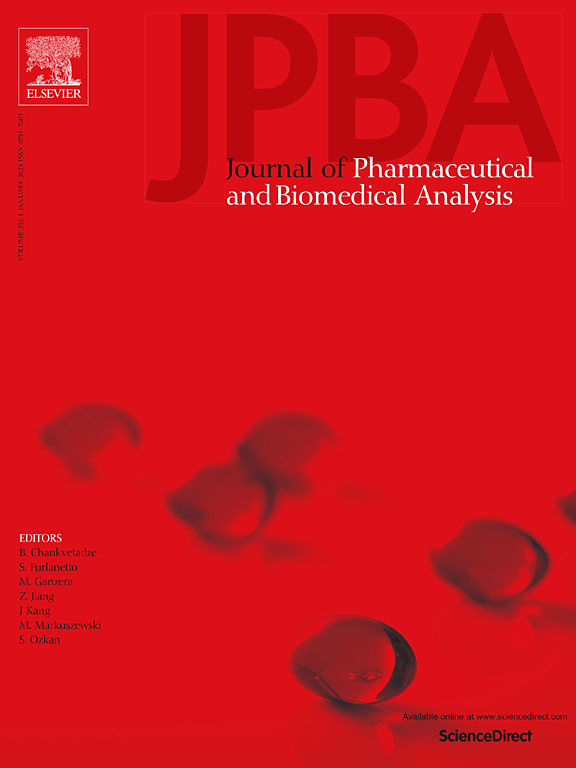Mimicking the reactivity of drug metabolites: Biomolecule conjugation of an electrochemically-generated, reactive oxidation product of the antibiotic minocycline
IF 3.1
3区 医学
Q2 CHEMISTRY, ANALYTICAL
Journal of pharmaceutical and biomedical analysis
Pub Date : 2025-01-27
DOI:10.1016/j.jpba.2025.116710
引用次数: 0
Abstract
Minocycline is an antibiotic of the tetracycline family which is widely used to treat a range of medical conditions. Although it has been in use for more than 50 years, little information is available on its metabolism in the human body. In this study, we simulate the biotransformation of minocycline by means of electrochemistry coupled to mass spectrometry. This analytical technique has already been used successfully in several cases to imitate enzyme-catalyzed reactions. Using this approach, we could show the generation of multiple electrochemical oxidation products which were characterized by tandem mass spectrometry. A N-dealkylated product was found to correspond to a literature-known in vivo metabolite. Two further oxidation products were detected, one of which exhibiting a reactive quinone moiety formed through electrochemical oxidation. The reactivity of this transformation product was assessed by conjugation reactions with glutathione, human hemoglobin and human serum albumin as model biomolecules. For all three peptides, conjugation reactions took place within minutes, corresponding to the number of free cysteine residues in the respective molecule, which are particularly susceptible to electrophiles like quinones. For glutathione, serum albumin and α-hemoglobin, a single conjugation of the reactive transformation product took place, whereas a twofold conjugation was detected for β-hemoglobin. This project showcases the capability of the purely instrumental approach to simulate the metabolism of xenobiotics without an interfering matrix to screen for reactive transformation products and to assess the reactivity of these products with regard to biomolecules.
求助全文
约1分钟内获得全文
求助全文
来源期刊
CiteScore
6.70
自引率
5.90%
发文量
588
审稿时长
37 days
期刊介绍:
This journal is an international medium directed towards the needs of academic, clinical, government and industrial analysis by publishing original research reports and critical reviews on pharmaceutical and biomedical analysis. It covers the interdisciplinary aspects of analysis in the pharmaceutical, biomedical and clinical sciences, including developments in analytical methodology, instrumentation, computation and interpretation. Submissions on novel applications focusing on drug purity and stability studies, pharmacokinetics, therapeutic monitoring, metabolic profiling; drug-related aspects of analytical biochemistry and forensic toxicology; quality assurance in the pharmaceutical industry are also welcome.
Studies from areas of well established and poorly selective methods, such as UV-VIS spectrophotometry (including derivative and multi-wavelength measurements), basic electroanalytical (potentiometric, polarographic and voltammetric) methods, fluorimetry, flow-injection analysis, etc. are accepted for publication in exceptional cases only, if a unique and substantial advantage over presently known systems is demonstrated. The same applies to the assay of simple drug formulations by any kind of methods and the determination of drugs in biological samples based merely on spiked samples. Drug purity/stability studies should contain information on the structure elucidation of the impurities/degradants.

 求助内容:
求助内容: 应助结果提醒方式:
应助结果提醒方式:


